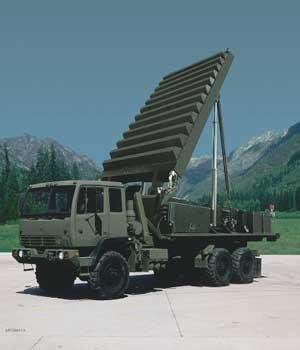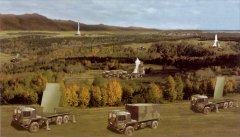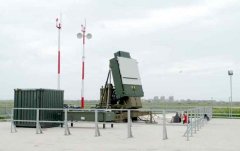MEADS
Description of the radar set, tactical-technical characteristics
As an US/German/Italian developement programme MEADS (Medium Extended Air Defense System) is to complement/replace PATRIOT, enabling the engagement of tactical ballistic missiles. The German development company is EADS/LFK. Germany plans to invest € 1 billion in the developement and € 3 billion in the producement of 12 systems. As a result from the high development and productions costs, MEADS is currently under political dispute.

Figure 2: The MEADS uses a UHF surveillance radar
In terms of shorter ranges and less “demanding” targets MEADS could be supplemented with a secondary missile like the ground lounched version of IRIS-T with a solid-propellant rocket motor: IRIS-T-SL (Surface Lounched). This highly mobile system can be integrated with networked air defence systems via a “Plug & Fight” data interface. An RF data link provides for the transmission of target information even if the missile is already in flight.
During the Final System Demonstration in Italy, MEADS successfully identified ballistic missile and hostile aircraft from a multiple-target set and engaged and destroyed the threats. Two radars - an X-Band fire control radar and a UHF- Band surveillance radar - will be intrinsic to the MEADS battery. External sensors will be able to provide alerting and cueing information to any TOC in the battalion.
MEADS uses the PAC-3 missile (for cost reasons). A standard fire unit, which is crewed by 19, consists of one search radar, two fire control radars (multifunction, can search too?), two operations centres, six 12-missile launchers. (One fire control radar, one OC and one launcher can work standalone.)
Sources: www.army-technology.com
www.fas.org


